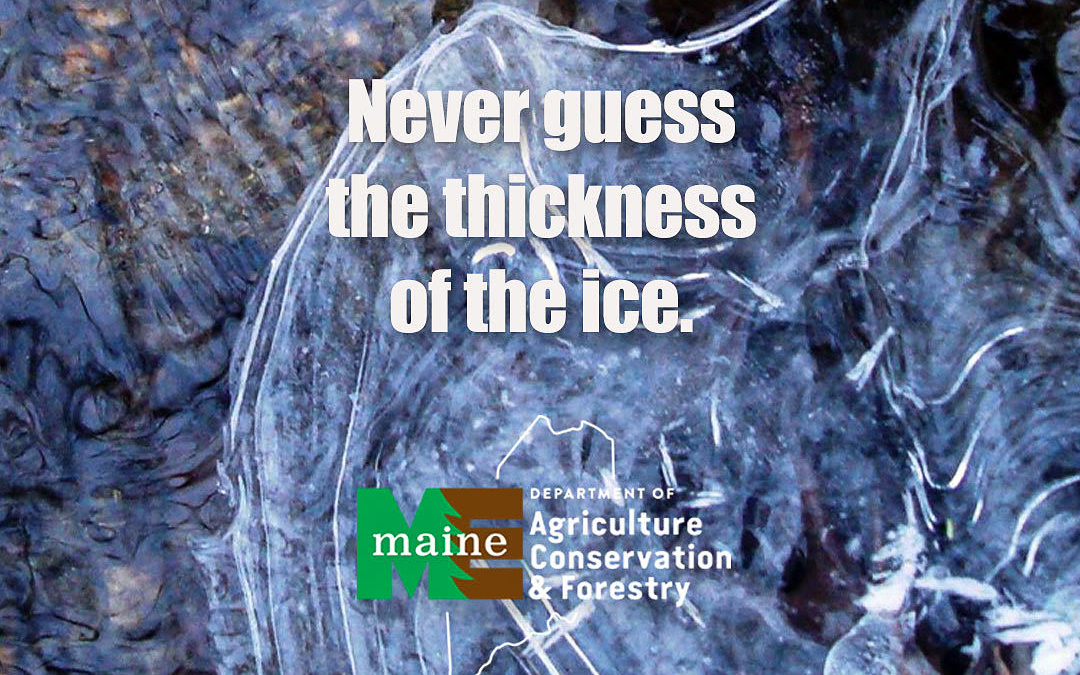With the fluctuating temperatures making it tricky to know if it is safe to enjoy recreational activities on the ice, the Maine Bureau of Parks and Lands recently issued a reminder to use extreme caution on winter ice.
Officials included the following tips from Matthew LaRoche, superintendent on the Allagash Wilderness Waterway.
“Check the thickness of the ice. It doesn’t take very long to chop a hole in the ice with an ax or chisel. I usually chop until I can see at least six inches of good dark ice. Six inches of ice is enough to support 4,000 pounds, according to the U.S. Army Cold Regions Research and Engineering Laboratory,” LaRoche said.
“To minimize your risk on frozen lakes you should check with the rangers or wardens who patrol the area where you plan to take a trip. They will know the current ice conditions and give you advice concerning areas that should be avoided.
“On large, interconnected lakes, some hazard areas to avoid are thoroughfares, inlets, outlets, pressure ridges, and spring holes. Basically, anywhere there is moving water should be avoided because moving water will not freeze as easily as standing water.
“Bring some basic safety equipment on your winter excursions on frozen lakes. My emergency equipment includes a throw bag for pulling someone else out of the water and the “picks of life” for pulling myself out of the water. These are nothing more than ice picks with a retractable cover over the sharp end. A couple of good-sized spikes will serve the same purpose. Also pack matches in a watertight container, a compass, and a small first aid kit.
“One of the most important things you can do for your safety when embarking on any outdoor adventure is — tell someone where you are going and what time you expect to return. This will help rangers and wardens find you when you really need help,” LaRoche said.
Other helpful tips from the Maine Department of Inland Fisheries and Wildlife include these:
- Never guess the thickness of the ice – check it. Check the ice in several different places using an auger or some other means to make a test hole and determine the thickness. Make several, beginning at the shore, and continuing as you go out.
- Check the ice with a partner, so if something does happen, someone is there to help you. If you are doing it alone, wear a lifejacket.
- If ice at the shoreline is cracked or squishy, stay off! Watch out for thin, clear or honeycombed ice. Dark snow and dark ice are other signs of weak spots.
- Avoid areas with currents, around bridges and pressure ridges. Wind and currents can break the ice.
- Adults should alert children of unsafe ice in their area, and make sure that they stay off the ice. If they insist on using their new skates, suggest an indoor skating rink.
State officials said there are things people should keep in mind in case they do break through thee ice.
First: don’t panic.
Don’t try to climb out immediately – you will probably break the ice again. Reach for solid ice.
Lay both arms on the unbroken ice and kick hard. This will help lift your body onto the ice. Once on the ice, roll, DONT WALK, to safety.
To help someone who has fallen through the ice, lie down flat and reach with a branch, plank or rope or form a human chain. Don’t stand. After securing the victim, wiggle backward to the solid ice.








